File Info
| Exam | SAP Certified Associate-Implementation Consultant-SAP Customer Data Platform |
| Number | C_C4H63_2411 |
| File Name | SAP.C_C4H63_2411.VCEplus.2025-01-29.30q.tqb |
| Size | 135 KB |
| Posted | Jan 29, 2025 |
| Download | SAP.C_C4H63_2411.VCEplus.2025-01-29.30q.tqb |
How to open VCEX & EXAM Files?
Files with VCEX & EXAM extensions can be opened by ProfExam Simulator.
Coupon: MASTEREXAM
With discount: 20%
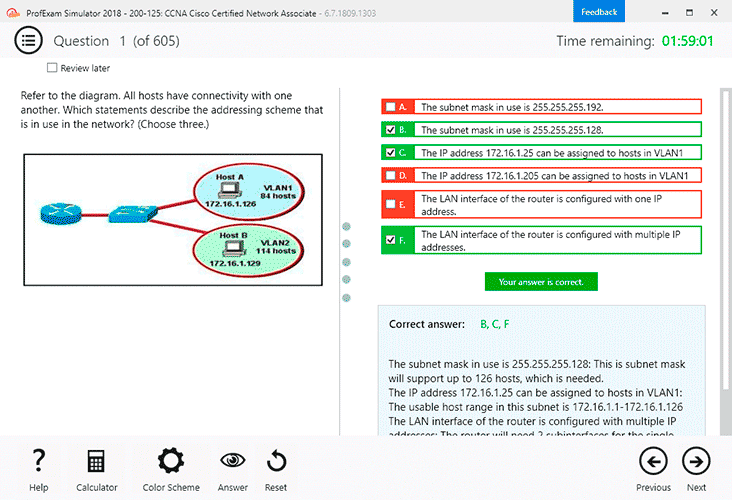
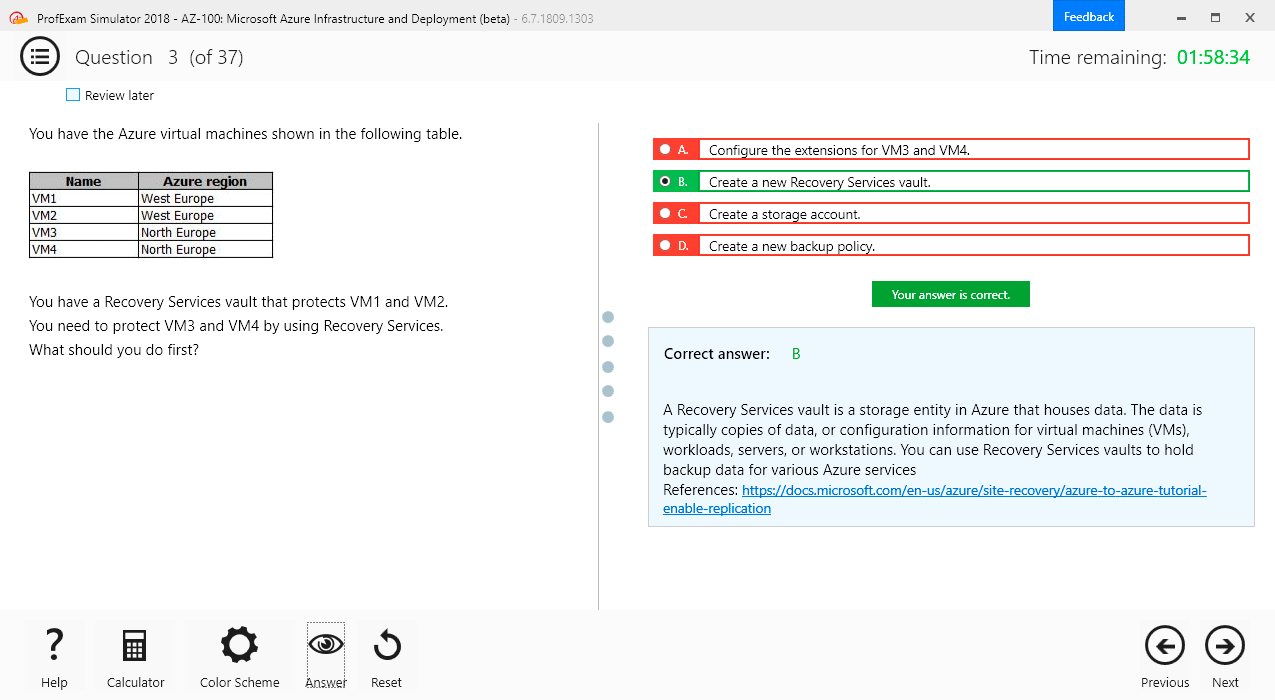
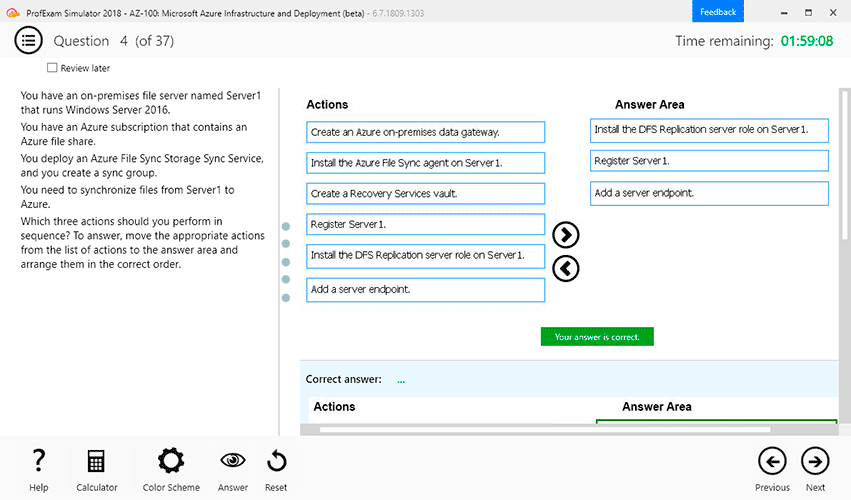
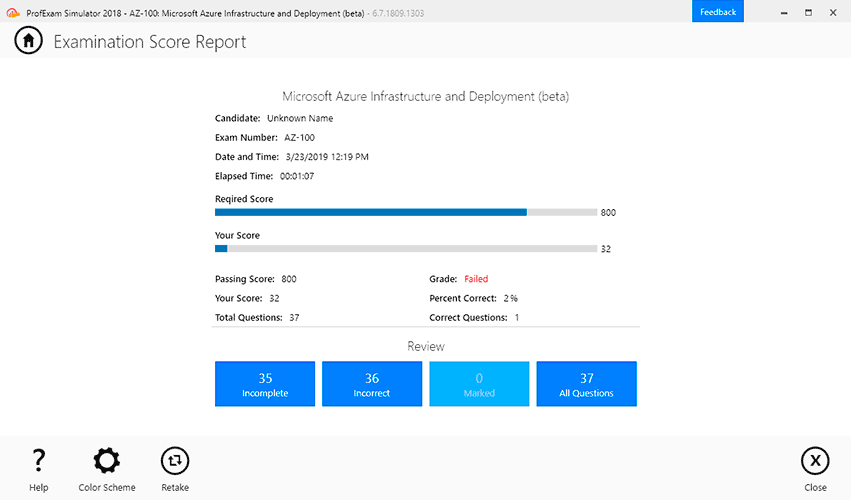
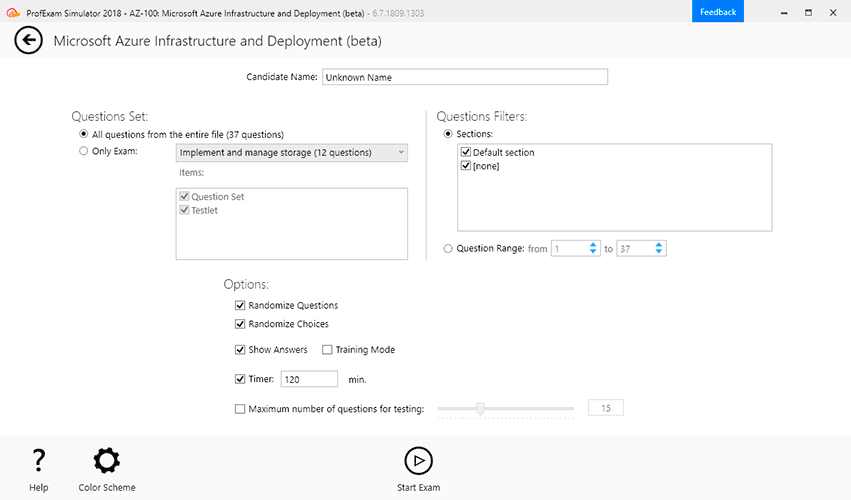

Demo Questions
Question 1
You want to implement family customer accounts in SAP Customer Data Platform. What is the best way to do this?
- By using segments
- By using groups and relationships
- By using custom profile attributes
- By using a dedicated activity schema
Correct answer: B
Explanation:
The SAP Customer Data Platform supports the implementation of family customer accounts through the use of groups and relationships. This approach allows for the creation of a unified view of customer contacts, associated accounts, and the relationships within these accounts. By leveraging this structure, organizations can gain enriched, real-time insights into their customer base, which is essential for driving growth and providing a customer-centric experience.Reference= This information is corroborated by the SAP Community article discussing the use of the SAP Customer Data Platform for B2B use cases, which outlines the importance of understanding customer relationships and the benefits of having actionable data1. The SAP Customer Data Platform supports the implementation of family customer accounts through the use of groups and relationships. This approach allows for the creation of a unified view of customer contacts, associated accounts, and the relationships within these accounts. By leveraging this structure, organizations can gain enriched, real-time insights into their customer base, which is essential for driving growth and providing a customer-centric experience.
Reference= This information is corroborated by the SAP Community article discussing the use of the SAP Customer Data Platform for B2B use cases, which outlines the importance of understanding customer relationships and the benefits of having actionable data1.
Question 2
Which of the following statements describe the relationship between workspaces, tenants, and business units? Note: There are 2 correct answers to this question.
- A business unit can contain multiple tenants.
- A tenant can contain multiple workspaces.
- A business unit can contain multiple workspaces.
- A workspace can contain multiple business units.
Correct answer: BC
Explanation:
The SAP Customer Data Platform is designed to manage customer data across different levels of organization. A tenant represents an instance of the platform provisioned for an organization, and within this tenant, multiple workspaces can be created. These workspaces serve as separate environments for development and production purposes. Additionally, a business unit, which is a logical partition within a workspace, can also contain multiple workspaces, allowing for further segmentation and management of customer data within the same organizational unit.Reference= This relationship is outlined in the SAP Customer Data Platform documentation available on the SAP Help Portal, which provides comprehensive information on the configuration and management of tenants, workspaces, and business units12. The SAP Customer Data Platform is designed to manage customer data across different levels of organization. A tenant represents an instance of the platform provisioned for an organization, and within this tenant, multiple workspaces can be created. These workspaces serve as separate environments for development and production purposes. Additionally, a business unit, which is a logical partition within a workspace, can also contain multiple workspaces, allowing for further segmentation and management of customer data within the same organizational unit.
Reference= This relationship is outlined in the SAP Customer Data Platform documentation available on the SAP Help Portal, which provides comprehensive information on the configuration and management of tenants, workspaces, and business units12.
Question 3
Which of the following is an example of first-party customer data?
- Customer data from a purchase intention
- Customer data imported from another company
- Customer data collected from public sources
- Customer data collected directly from consumers
Correct answer: D
Explanation:
First-party customer data refers to the information that is collected directly from customers by the company itself. This includes data gathered through interactions with the company's own channels, such as websites, mobile apps, customer service interactions, and in-store visits.The SAP Customer Data Platform enables businesses to connect various types of customer data to deliver personalized experiences, and first-party data is crucial for creating a comprehensive view of the customer1.Reference= The explanation aligns with the functionalities and use cases of the SAP Customer Data Platform as described in the official SAP Help Portal1. First-party customer data refers to the information that is collected directly from customers by the company itself. This includes data gathered through interactions with the company's own channels, such as websites, mobile apps, customer service interactions, and in-store visits.The SAP Customer Data Platform enables businesses to connect various types of customer data to deliver personalized experiences, and first-party data is crucial for creating a comprehensive view of the customer1.Reference= The explanation aligns with the functionalities and use cases of the SAP Customer Data Platform as described in the official SAP Help Portal1.
Question 4
For an incoming event, what value can SAP Customer Data Platform store for an active processing purpose status field?
- 1
- Yes
- Allowed
- Granted
Correct answer: C
Explanation:
In the context of the SAP Customer Data Platform, the active processing purpose status for an incoming event is always attached to the event. This status indicates whether the data is allowed to be stored in the system, and which data may be sent out to destination applications. The processing purpose can be dynamic, meaning it is part of the incoming event's data model and is saved to the customer profile with the status and timestamp data that was sent with the event. This is achieved by mapping the event purpose nodes to the data privacy framework within the platform.Reference= The information is based on the SAP Help Portal documentation on Processing Purposes, which details the use cases, core concepts, and data governance enforcement related to processing purposes within the SAP Customer Data Platform1. In the context of the SAP Customer Data Platform, the active processing purpose status for an incoming event is always attached to the event. This status indicates whether the data is allowed to be stored in the system, and which data may be sent out to destination applications. The processing purpose can be dynamic, meaning it is part of the incoming event's data model and is saved to the customer profile with the status and timestamp data that was sent with the event. This is achieved by mapping the event purpose nodes to the data privacy framework within the platform.
Reference= The information is based on the SAP Help Portal documentation on Processing Purposes, which details the use cases, core concepts, and data governance enforcement related to processing purposes within the SAP Customer Data Platform1.
Question 5
The customer schema of a group includes two predefined attributes that can be used for B2B scenarios.
Which one of the following attributes is one of the two predefined ones?
- BusinessName
- Accountid
- Customerld
- Businessld
Correct answer: D
Explanation:
In B2B scenarios within the SAP Customer Data Platform, accurately identifying and managing business entities is crucial. The customer schema is designed to accommodate the complexities of B2B interactions, including the need to manage relationships between individual contacts and their associated organizations.D . BusinessId: This predefined attribute is essential in B2B scenarios, as it serves as a unique identifier for business entities within the platform. The BusinessId allows for the clear distinction and management of business accounts, facilitating effective B2B data handling, segmentation, and personalized engagement strategies.The inclusion of predefined attributes like BusinessId in the customer schema underscores the platform's capability to cater to both B2C and B2B environments, providing the necessary tools for comprehensive customer data management.SAP Customer Data Platform documentation on customer schemas and B2B capabilities.SAP help articles and best practices for managing B2B scenarios within the SAP Customer Data Platform. In B2B scenarios within the SAP Customer Data Platform, accurately identifying and managing business entities is crucial. The customer schema is designed to accommodate the complexities of B2B interactions, including the need to manage relationships between individual contacts and their associated organizations.
D . BusinessId: This predefined attribute is essential in B2B scenarios, as it serves as a unique identifier for business entities within the platform. The BusinessId allows for the clear distinction and management of business accounts, facilitating effective B2B data handling, segmentation, and personalized engagement strategies.
The inclusion of predefined attributes like BusinessId in the customer schema underscores the platform's capability to cater to both B2C and B2B environments, providing the necessary tools for comprehensive customer data management.
SAP Customer Data Platform documentation on customer schemas and B2B capabilities.
SAP help articles and best practices for managing B2B scenarios within the SAP Customer Data Platform.
Question 6
You need to ingest some customer data into SAP Customer Data Platform while observing data compliance regulations.
What needs to be configured inside SAP Customer Data Platform before you can do this?
- Customer opt-in to subscription
- Customer consent
- Activity indicators
- Processing purposes
Correct answer: D
Explanation:
Before ingesting customer data into the SAP Customer Data Platform (CDP), it is essential to configure processing purposes within the system. This is a built-in mechanism that identifies the different purposes for handling customer data that streams into and out of the system. The processing of personal data is governed by regional and local regulations, such as GDPR and CCPA. The CDP ingestion process allows businesses to ensure compliance with these regulations, restrictions, and policies applicable to customer data usage. It is important to note that the CDP ingestion process does not collect, audit, or handle the actual collection of processingpurposes. Instead, it allows for storing those collected purposes and applying data governance based on those purposes. In the context of CDP, the processing purpose is sent as data points in an event from a source, and multiple processing purposes may be defined per business unit. Only those processing purposes needed for managing customer data in CDP should be added.Reference= The detailed explanation is based on information found in the SAP Help Portal, specifically within the documentation for processing purposes in the SAP Customer Data Platform1. Before ingesting customer data into the SAP Customer Data Platform (CDP), it is essential to configure processing purposes within the system. This is a built-in mechanism that identifies the different purposes for handling customer data that streams into and out of the system. The processing of personal data is governed by regional and local regulations, such as GDPR and CCPA. The CDP ingestion process allows businesses to ensure compliance with these regulations, restrictions, and policies applicable to customer data usage. It is important to note that the CDP ingestion process does not collect, audit, or handle the actual collection of processing
purposes. Instead, it allows for storing those collected purposes and applying data governance based on those purposes. In the context of CDP, the processing purpose is sent as data points in an event from a source, and multiple processing purposes may be defined per business unit. Only those processing purposes needed for managing customer data in CDP should be added.
Reference= The detailed explanation is based on information found in the SAP Help Portal, specifically within the documentation for processing purposes in the SAP Customer Data Platform1.
Question 7
You want to authenticate requests to event listeners created by the source server application. How can you do this? Note: There are 2 correct answers to this question.
- Pass the SSL certificate of the client.
- Pass a constructed JWT as the bearer token.
- Pass the one-time password generated by the REST API endpoint.
- Pass the user key and secret key as parameters.
Correct answer: BD
Explanation:
When using a server application to make API calls to the SAP Customer Data Platform, you can authenticate requests to event listeners by passing a constructed JWT as the bearer token or by using the user key and secret key as parameters. The use of an asymmetric RSA key pair is also mentioned, which is typically involved in the creation of a JWT. However, passing the SSL certificate of the client or a one-time password generated by the REST API endpoint is not specified as a method for authenticating these requests.Reference= The information is based on the SAP Customer Data Platform documentation, which details the methods for signing requests to the platform1. When using a server application to make API calls to the SAP Customer Data Platform, you can authenticate requests to event listeners by passing a constructed JWT as the bearer token or by using the user key and secret key as parameters. The use of an asymmetric RSA key pair is also mentioned, which is typically involved in the creation of a JWT. However, passing the SSL certificate of the client or a one-time password generated by the REST API endpoint is not specified as a method for authenticating these requests.
Reference= The information is based on the SAP Customer Data Platform documentation, which details the methods for signing requests to the platform1.
Question 8
Which functionalities are always used when ingesting customer data into SAP Customer Data Platform? Note: There are 2 correct answers to this question.
- Source applications
- Segments
- Audiences
- Events
Correct answer: AD
Explanation:
The SAP Customer Data Platform ingests data from various source applications to build a coherent view of the customers. It defines a customer schema to create a common data model for all incoming customer data. Events are also a part of the data ingestion process, as they represent the actions taken by customers and are crucial for creating a complete customer profile.Reference=SAP Customer Data Platform | SAP Help Portal,How does SAP Customer Data Platform do it? - SAP Learning The SAP Customer Data Platform ingests data from various source applications to build a coherent view of the customers. It defines a customer schema to create a common data model for all incoming customer data. Events are also a part of the data ingestion process, as they represent the actions taken by customers and are crucial for creating a complete customer profile.Reference=SAP Customer Data Platform | SAP Help Portal,How does SAP Customer Data Platform do it? - SAP Learning
Question 9
Which of the following can be used as audience conditions? Note: There are 3 correct answers to this question.
- Event
- Action
- Indicator
- Profile attribute
- Segment
Correct answer: CDE
Explanation:
In the SAP Customer Data Platform, audiences are groups of customers that marketers can target in marketing campaigns. Marketers build audiences by applying conditions to profile attributes, segments, and activity indicators. These conditions help in defining the specific characteristics of the audience members based on their profiles and behaviors.Reference=Audiences | SAP Help Portal,Creating Audiences - SAP Learning In the SAP Customer Data Platform, audiences are groups of customers that marketers can target in marketing campaigns. Marketers build audiences by applying conditions to profile attributes, segments, and activity indicators. These conditions help in defining the specific characteristics of the audience members based on their profiles and behaviors.Reference=Audiences | SAP Help Portal,Creating Audiences - SAP Learning
Question 10
Which of the following describes a business unit in SAP Customer Data Platform?
- The business unit is a predefined optional attribute in the customer schema; it allows segmenting of B2B customers based on their business hierarchy.
- A business unit represents the part of a business responsible for maintaining ongoing business relationships with customers in a given market. A single business unit can include more than one brand.
- The business unit is an optional informational attribute of the Console Admin user in SAP Customer Data Platform.
- The business unit represents the owner of the SAP Customer Data Platform tenant. Each business unit within the organization has separate SAP Customer Data Platform tenants provisioned.
Correct answer: B
Explanation:
In the SAP Customer Data Platform, a business unit is defined as the part of a business that is tasked with maintaining continuous business relationships with customers within a specific market. This definition implies that a business unit is not just a segment or a division, but a functional entity within the organization that directly interacts with the customer base.Furthermore, it is important to note that a single business unit can encompass multiple brands, indicating that it can operate across different product lines or service offerings under the broader corporate umbrella.Reference= This information is corroborated by the SAP Help Portal, which provides a clear definition of a business unit within the context of the SAP Customer Data Platform1. In the SAP Customer Data Platform, a business unit is defined as the part of a business that is tasked with maintaining continuous business relationships with customers within a specific market. This definition implies that a business unit is not just a segment or a division, but a functional entity within the organization that directly interacts with the customer base.Furthermore, it is important to note that a single business unit can encompass multiple brands, indicating that it can operate across different product lines or service offerings under the broader corporate umbrella.Reference= This information is corroborated by the SAP Help Portal, which provides a clear definition of a business unit within the context of the SAP Customer Data Platform1.

